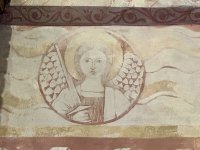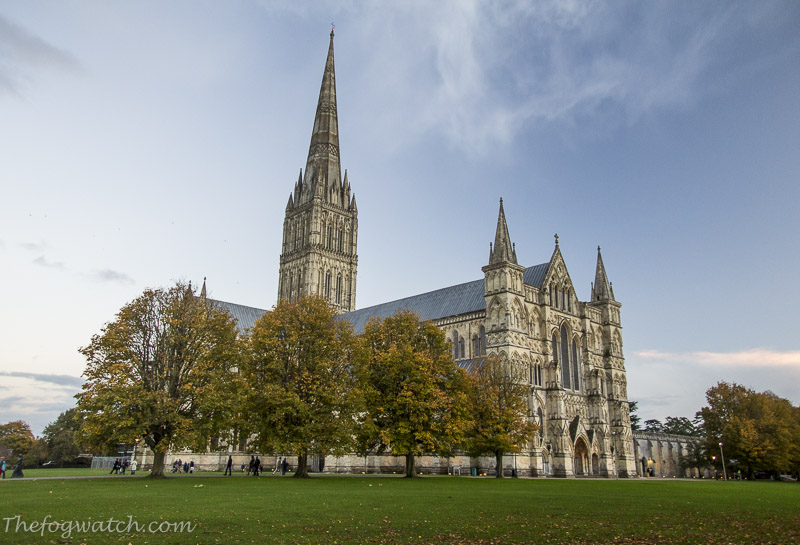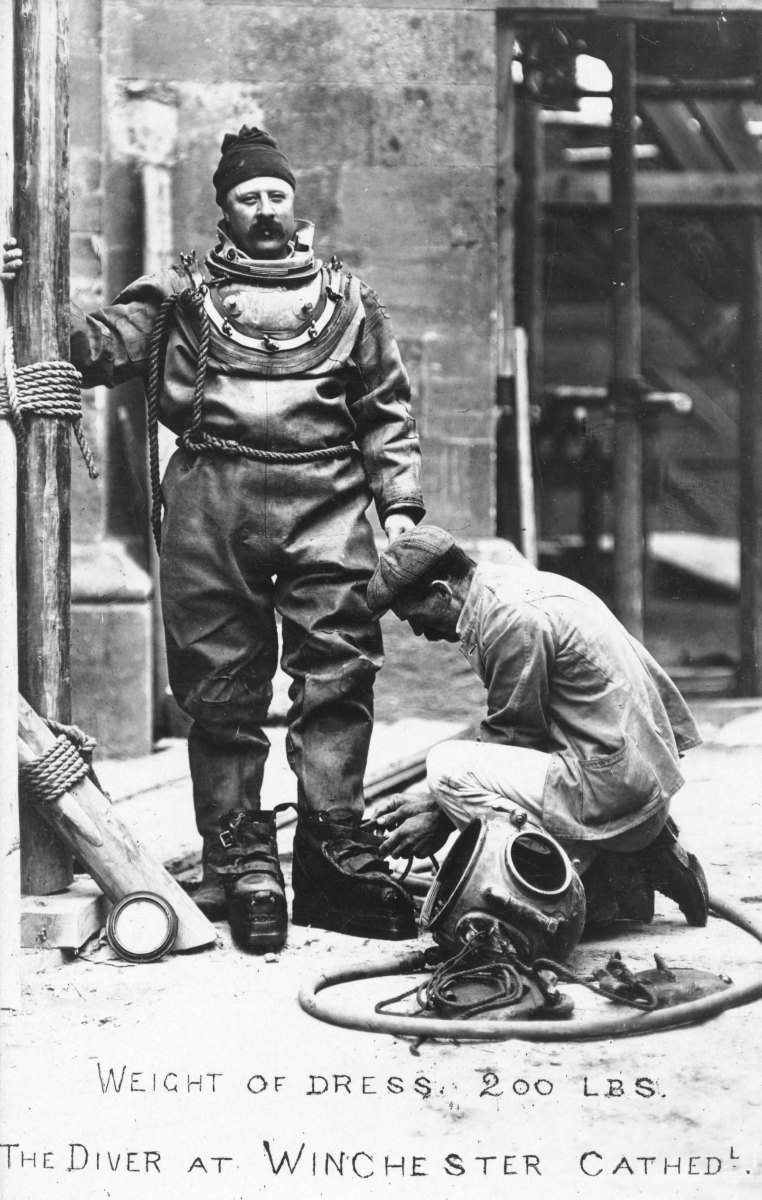The land on which the Normans began to build the Cathedral in 1079, alongside (and eventually overlapping the site of) its Anglo-Saxon predecessor, was not ideal geologically. The site was on the prehistoric bed of the Itchen (which had been diverted to the east of Winchester by the Romans) and valley gravels, which would have provided a good foundation, were covered by a layer of peat from the decaying vegetation of the river valley, then chalky marl washed down from the town’s western slopes.
The situation was summarised by Sir Thomas Jackson, the architect who oversaw the repairs (although recent archaeological research has shown that in fact the foundations were more sophisticated than Jackson believed): ‘Bishop Walkelin’s men dug down to water and then seem to have scooped out the marly soil overlying the peat, and part of the peat itself, in some cases within a foot or so of the hard gravel on which we underpin. Into these excavations they pitched loose flints and chalk till they were able to build in the dry.









